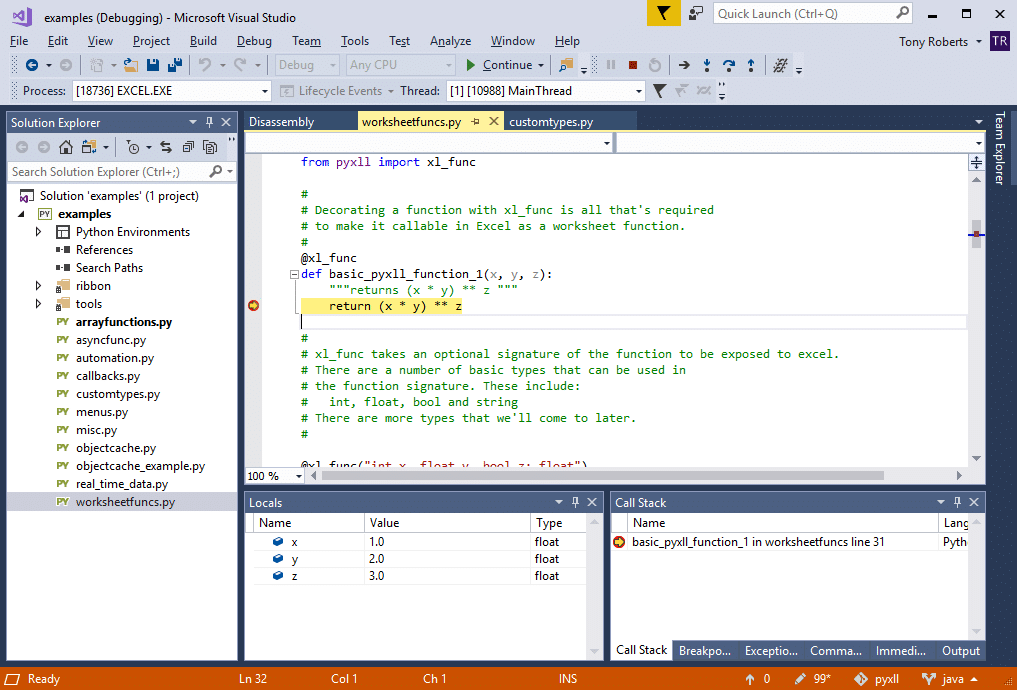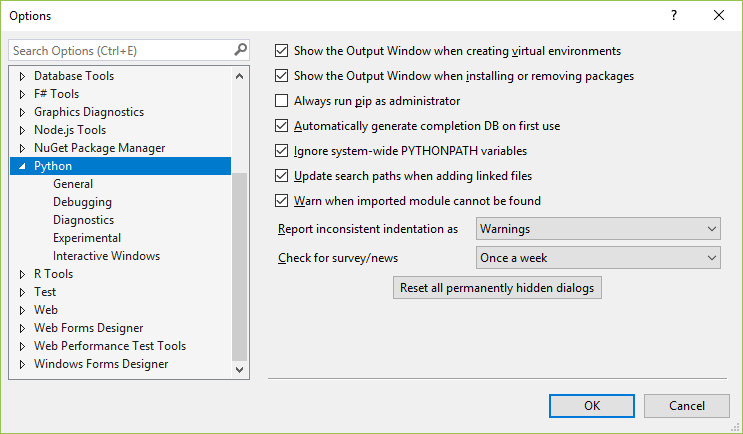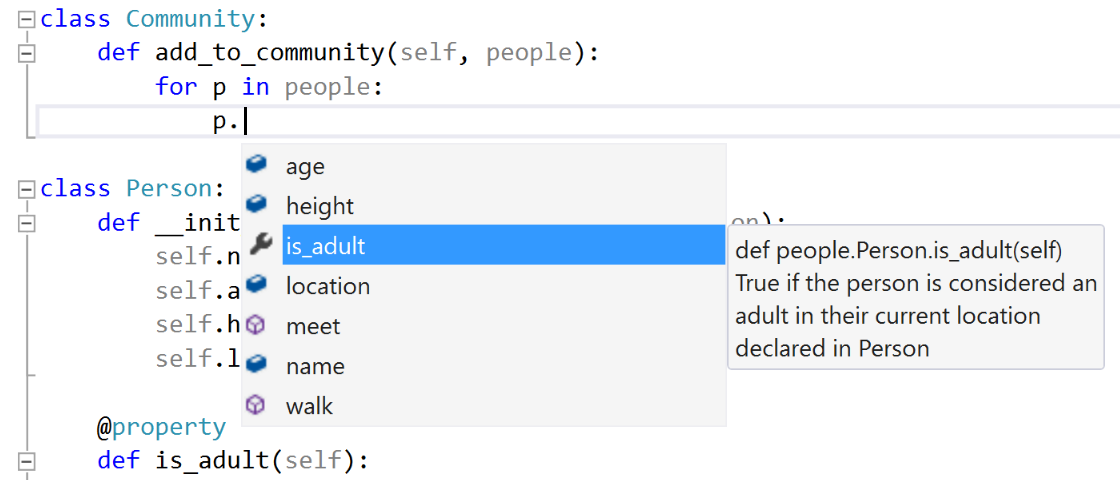Install Visual Studio Code. Install Visual Studio Code with Ubuntu Software. Other methods can be used, but Ubuntu Software remains the more stable option. Python is already installed on Ubuntu. But be carrefull, two versions coexist on ubuntu: Python 2.7.17 and Python 3.6.9. This video describes how to install any python package using pip command. It is very easy to install python packages using pip command. The command starts wi.
-->If you share a project with others, use a build system, or plan to copy the project to any other location where you need to restore an environment, you need to specify the external packages that the project requires. The recommended approach is to use a requirements.txt file (readthedocs.org) that contains a list of commands for pip that installs the required versions of dependent packages. The most common command is pip freeze > requirements.txt, which records an environment's current package list into requirements.txt.
Technically, any filename may be used to track requirements (by using -r <full path to file> when installing a package), but Visual Studio provides specific support for requirements.txt:
If you've loaded a project that contains requirements.txt and wish to install all the packages listed in that file, expand the Python Environments node in Solution Explorer, then right-click an environment node and select Install from requirements.txt:
If you want to install the dependencies in a virtual environment, create and activate that environment first, then use the Install from requirements.txt command. For more information on creating a virtual environment, see Use virtual environments.
If you already have all the necessary packages installed in an environment, you can right-click that environment in Solution Explorer and select Generate requirements.txt to create the necessary file. If the file already exists, a prompt appears for how to update it:
- Replace entire file removes all items, comments, and options that exist.
- Refresh existing entries detects package requirements and updates the version specifiers to match the version you currently have installed.
- Update and add entries refreshes any requirements that are found, and adds all other packages to the end of the file.
Because requirements.txt files are intended to freeze the requirements of an environment, all installed packages are written with precise versions. Using precise versions ensures that you can easily reproduce your environment on another computer. Packages are included even if they were installed with a version range, as a dependency of another package, or with an installer other than pip.
If a package cannot be installed by pip and it appears in a requirements.txt file, the entire installation fails. In this case, manually edit the file to exclude this package or to use pip's options to refer to an installable version of the package. For example, you may prefer to use pip wheel to compile a dependency and add the --find-links <path> option to your requirements.txt:
See also
This guide discusses how to install packages using pip anda virtual environment manager: either venv for Python 3 or virtualenvfor Python 2. These are the lowest-level tools for managing Pythonpackages and are recommended if higher-level tools do not suit your needs.
Note
This doc uses the term package to refer to aDistribution Package which is different from an ImportPackage that which is used to import modules in your Python source code.
Installing pip¶
pip is the reference Python package manager. It’s used to install andupdate packages. You’ll need to make sure you have the latest version of pipinstalled.
Windows¶
The Python installers for Windows include pip. You should be able to accesspip using:
You can make sure that pip is up-to-date by running:
Linux and macOS¶
Debian and most other distributions include a python-pip package, if youwant to use the Linux distribution-provided versions of pip seeInstalling pip/setuptools/wheel with Linux Package Managers.
You can also install pip yourself to ensure you have the latest version. It’srecommended to use the system pip to bootstrap a user installation of pip:
Afterwards, you should have the newest pip installed in your user site:
Installing virtualenv¶
Note
If you are using Python 3.3 or newer, the venv module isthe preferred way to create and manage virtual environments.venv is included in the Python standard library and requires no additional installation.If you are using venv, you may skip this section.
virtualenv is used to manage Python packages for different projects.Using virtualenv allows you to avoid installing Python packages globallywhich could break system tools or other projects. You can install virtualenvusing pip.
On macOS and Linux:
On Windows:
Creating a virtual environment¶

venv (for Python 3) and virtualenv (for Python 2) allowyou to manage separate package installations fordifferent projects. They essentially allow you to create a “virtual” isolatedPython installation and install packages into that virtual installation. Whenyou switch projects, you can simply create a new virtual environment and nothave to worry about breaking the packages installed in the other environments.It is always recommended to use a virtual environment while developing Pythonapplications.
To create a virtual environment, go to your project’s directory and runvenv. If you are using Python 2, replace venv with virtualenvin the below commands.
On macOS and Linux:
On Windows:
The second argument is the location to create the virtual environment. Generally, youcan just create this in your project and call it env.
venv will create a virtual Python installation in the env folder.
Note
You should exclude your virtual environment directory from your versioncontrol system using .gitignore or similar.
Activating a virtual environment¶
Before you can start installing or using packages in your virtual environment you’llneed to activate it. Activating a virtual environment will put thevirtual environment-specificpython and pip executables into your shell’s PATH.
On macOS and Linux:
On Windows:
You can confirm you’re in the virtual environment by checking the location of yourPython interpreter, it should point to the env directory.
On macOS and Linux:
On Windows:
As long as your virtual environment is activated pip will install packages into thatspecific environment and you’ll be able to import and use packages in yourPython application.
Leaving the virtual environment¶
If you want to switch projects or otherwise leave your virtual environment, simply run:
If you want to re-enter the virtual environment just follow the same instructions aboveabout activating a virtual environment. There’s no need to re-create the virtual environment.
Installing packages¶
Now that you’re in your virtual environment you can install packages. Let’s install theRequests library from the Python Package Index (PyPI):
pip should download requests and all of its dependencies and install them:
Installing specific versions¶
pip allows you to specify which version of a package to install usingversion specifiers. For example, to installa specific version of requests:

To install the latest 2.x release of requests:
To install pre-release versions of packages, use the --pre flag:
Installing extras¶
Some packages have optional extras. You can tell pip to install these byspecifying the extra in brackets:
Installing from source¶
pip can install a package directly from source, for example:
Additionally, pip can install packages from source in development mode,meaning that changes to the source directory will immediately affect theinstalled package without needing to re-install:
Installing from version control systems¶
Learning Python In Visual Studio
pip can install packages directly from their version control system. Forexample, you can install directly from a git repository:
For more information on supported version control systems and syntax, see pip’sdocumentation on VCS Support.
Installing from local archives¶
If you have a local copy of a Distribution Package’s archive (a zip,wheel, or tar file) you can install it directly with pip:
Visual Studio Python Update Pip
If you have a directory containing archives of multiple packages, you can tellpip to look for packages there and not to use thePython Package Index (PyPI) at all:
This is useful if you are installing packages on a system with limitedconnectivity or if you want to strictly control the origin of distributionpackages.
Using other package indexes¶
If you want to download packages from a different index than thePython Package Index (PyPI), you can use the --index-url flag:
If you want to allow packages from both the Python Package Index (PyPI)and a separate index, you can use the --extra-index-url flag instead:

Upgrading packages¶
pip can upgrade packages in-place using the --upgrade flag. For example, toinstall the latest version of requests and all of its dependencies:
Using requirements files¶
Instead of installing packages individually, pip allows you to declare alldependencies in a Requirements File. Forexample you could create a requirements.txt file containing:
And tell pip to install all of the packages in this file using the -r flag:

Freezing dependencies¶
Pip can export a list of all installed packages and their versions using thefreeze command:
Which will output a list of package specifiers such as:
This is useful for creating Requirements Files that can re-createthe exact versions of all packages installed in an environment.
